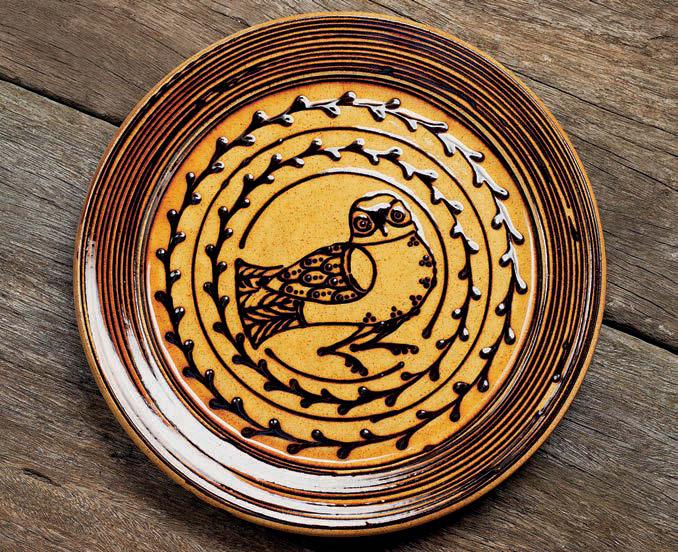LINDA BLOOMFIELD
GLAZE BASICS: ALTERING YOUR GLAZE Last month, I covered how to make and fire glaze tests. This month I will explain how to analyse your glaze test results and adjust the glaze or correct any defects
O
nce you have fired your glaze test and unloaded it from the kiln, you can begin to use your new glaze, make up a bigger batch and glaze some pots with it. Never throw a glaze test away; you may want to come back to it later. After your initial excitement or disappointment, it’s time to take a closer look and analyse your results. Think about the following qualities.
Linda Bloomfield is a scientist turned potter. More glaze recipes can be found in her books, Advanced Pottery (2011), Colour in Glazes (A&C Black 2012), The Handbook of Glaze Recipes (Bloomsbury 2014) and Science for Potters (The American Ceramic Society 2017). Her new book Special Effect Glazes, and the second edition of Colour in Glazes are both out now. Linda has recently launched her online glazing course, How Glazes Work, on her website:
lindabloomfield.co.uk
Above: Glaze defects: Crazing, crawling, blisters and pinholes.
Is the glaze glossy or matt? Is the glaze runny? You will only have an idea of how much it runs if the test tile was fired vertically. Is it the colour you expected? Are there any visible glaze defects: cracks, pinholes or blisters?
Glaze defects
Above: Hollis Engley’s crawled shino bowls. The white shino glaze has crawled, showing the stoneware clay beneath. Shino glaze is high in clay, which can cause crawling.
There are several glaze defects that can occur, although one potter’s defect might be another potter’s special effect! One such defect is known as crazing, when a network of fine cracks develops in your glaze, accompanied by a series of pinging sounds. Crazing occurs when the expansion of your glaze is too high compared to the expansion of the clay body. As the glaze cools after firing, it contracts more than the clay body, and cracks develop to release the stress. If this effect is desired, it is called crackle, although it greatly weakens the pot, which will break more easily than a pot without cracks in the glaze. If you don’t want crackle, you can adjust your glaze by adding quartz (silica) or talc (magnesium silicate) to the glaze in 2% increments, then sieving, dipping a test tile and firing to see if the crazing is reduced or eliminated. You might also need to try out the glaze on a larger test tile or pot to be sure there is no crazing. Thinning the glaze with water will also help correct crazing. The opposite of crazing is known
as shivering, where the glaze has a lower expansion than the clay body. This can cause the glaze to flake off in sharp flakes at the base, rim or edges of handles. It can cause porcelain or stoneware pots to crack in two, known as dunting. To correct shivering or dunting, you need to add a high expansion material to the glaze. Sodium oxide has the highest expansion of all glaze materials, so you can add this in the form of soda feldspar or nepheline syenite, around 2%. As well as correcting shivering, it might also cause the glaze to be slightly more runny. Crawling occurs when the glaze forms into beads with bare patches in between. It can often be caused by applying the glaze too thickly. You can add water to the glaze to get a thinner application. Some glaze materials can cause crawling, including ball clay and zinc oxide. These materials can be calcined (heated to biscuit temperature) to reduce their shrinkage during drying.
18 ClayCraft Issue 60
018-19 Glazing Issue 60.indd 18
04/02/2022 15:07






